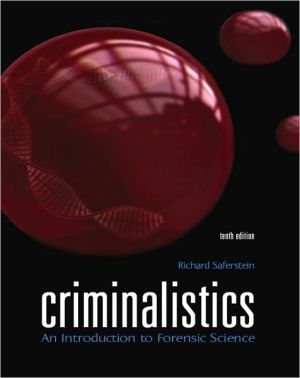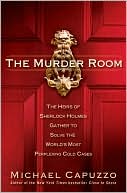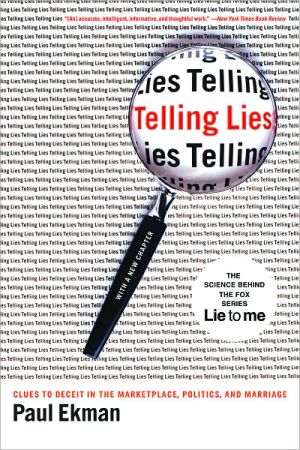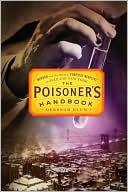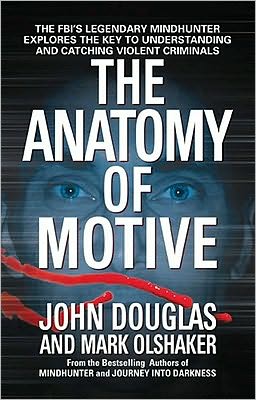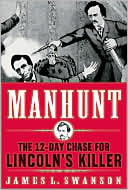Criminalistics: An Introduction to Forensic Science
Criminalistics is the definitive source for forensic science because it makes the technology of the modern crime laboratory clear to the non-scientist. Written by a well-known authority, the text covers the comprehensive realm of forensics and its role in criminal investigations. Physical evidence collection and preservation techniques are examined in detail–including chapters on Computer Forensics and DNA. By referencing real cases throughout, Criminalistics, 10e captures the pulse and...
Search in google:
Criminalistics is the definitive source for forensic science because it makes the technology of the modern crime laboratory clear to the non-scientist. Written by a well-known authority, the text covers the comprehensive realm of forensics and its role in criminal investigations. Physical evidence collection and preservation techniques are examined in detail–including chapters on Computer Forensics and DNA. By referencing real cases throughout, Criminalistics, 10e captures the pulse and intensity of forensic science investigations and the attention of the busiest student. Some new, excited features for this edition include: New! Crime-Scene Reconstruction chapter New! Coverage of the latest DNA forensic technology New! MyCrimeKit–is an online supplement that offers book-specific content such as Learning Objectives; Chapter Summaries Flashcards Practice Tests,Video Clips, Web Extras, and Animations Activities!This book aims at making the subject of forensic science comprehensible to a wide variety of readers who are planning on being aligned with the forensic science profession. Booknews Focuses on the technologies police currently rely on, including the latest DNA typing procedures, new advances in crime scene investigation, the digital imaging enhancement of fingerprints, computerized ballistic examination, drug and alcohol analyses, and arson and explosion detection technologies. Conceptssuch as how common items of physical evidence are located at crime scenes and how they are processed in the crime labare illustrated through the use of such noted criminal cases as the Lindbergh kidnapping and O.J. Simpson criminal investigation. Annotation c. by Book News, Inc., Portland, Or.
PREFACE: \ PREFACE\ As we enter a new century, the science of DNA profiling has altered the complexion of criminal investigation. Just a few years ago, few could have envisioned the impact DNA technology would have at linking a crime with its perpetrator. DNA collected from saliva on a cup or from dandruff or sweat on a hat exemplifies the emergence of nontraditional forms of evidence collection at crime scenes. Currently, the criminal justice system is gearing up to create vast DNA data banks designed to snare the criminal who is unaware of the consequence of leaving behind the minutest quantity of biological material at a crime scene.\ During the highly publicized O. J. Simpson criminal and civil trials, forensic scientists systematically placed Simpson at the crime scene through DNA analyses, hair and fiber comparisons, and footwear impressions. As millions of Americans watched the O. J. Simpson case unfold, they, in a sense, became students of forensic science. Intense media coverage of the crime-scene search and investigation, as well as the ramifications of findings of physical evidence at the crime scene, all became the subject of study, commentary, and conjecture. For those of us who have taught forensic science in the classroom, it comes as no surprise that forensic science can grip and hold the attention of those who otherwise would have no interest in any science subject. The O. J. Simpson case amply demonstrates how intertwined criminal investigation has become with forensic science. Through seven editions, Criminalistics has striven to depict the role of the forensic scientist in the criminal justice system. The current edition builds onthe contents of its predecessors and seeks to update the reader with the latest technologies available to crime laboratory personnel. Like all facets of modern life, forensic science has been touched by the Internet. This new edition introduces the reader to basic concepts of Internet use and encourages exploration of Web sites particularly relevant to forensic science and criminal investigation.\ Making science relevant and pertinent to the interests and goals of the student is a desirable but often elusive goal pursued by educators. Criminalistics is written with such lofty objectives in mind. The seventh edition of Criminalistics retains the purpose and intent of the previous editions. First and foremost is a presentation of the techniques, skills, and limitations of the modern crime laboratory for a reader who has no background in the forensic sciences. The nature of physical evidence is emphasized along with the limitations that technology and knowledge impose on its individualization and characterization.\ A major portion of the text centers on discussions of the common items of physical evidence encountered at crime scenes. These chapters include updated techniques describing forensic analysis as well as procedures and practices relating to the proper collection and preservation of evidence at crime scenes. Particular attention is paid to the meaning and role of probability in interpreting the evidential significance of scientifically evaluated evidence.\ The implications of DNA profiling are important enough to warrant their inclusion in a chapter in Criminalistics. In keeping with the style and content of the book's previous editions, the topic of DNA is described in a manner that will make it comprehensible and relevant to readers who lack a scientific background. The discussion focuses on giving the reader insight into what DNA is and explains its central role in controlling the body's chemistry. Finally, the chapter describes the process of DNA typing and illustrates its application to criminal investigations through examples of actual case histories.\ In selecting the subject matter for the book, I have drawn on my experience both as an active forensic scientist and as an instructor of forensic science at the college level. No prior knowledge about scientific principles or techniques is assumed of the reader. He or she is introduced to those areas of chemistry and biology relating to the analysis of physical evidence with a minimum of scientific terminology and equations. It is not the intent of this book to make scientists or forensic experts of the reader. For this reason, the chemistry and biology discussed are limited to a minimum core of facts and principles that will make the subject matter comprehensible and meaningful to the nonscientist. Nevertheless, it will certainly be gratifying if this effort motivates some students to seek further scientific knowledge and perhaps direct their education toward a career in forensic science.\ Although Criminalistics is an outgrowth of a one-semester course offered as part of a criminal justice program at many New Jersey colleges, its subject matter is not limited to the college student. Optimum utilization of crime laboratory services requires that criminal investigators have a knowledge of the techniques and capabilities of the laboratory that extends beyond any summary that may be gleaned from departmental brochures dealing with the collection and packaging of physical evidence. Only by combining a knowledge of the principles and techniques of forensic science with logic and common sense will the investigator gain a comprehensive insight into the meaning and significance of physical evidence and its role in criminal investigations. Forensic science begins at the crime scene. If the investigator cannot recognize, collect, and package evidence properly, no amount of equipment or expertise will salvage the situation.\ Likewise, there is a dire need to bridge the "communication gap" that currently exist among lawyers, judges, and the forensic scientist. An intelligent evaluation of the scientist's data and any subsequent testimony that may follow will again depend on the familiarity of the underlying principles of forensic science. Too many practitioners of the law profess ignorance of the subject or at best attempt to gain a superficial understanding of its meaning and significance only minutes before meeting the expert witness. To this end, it is hoped that the book will provide a painless route to comprehending the nature of the science.\ In order to merge theory with practice, a number of actual forensic case histories are included in the text. It is intended that these illustrations will remove forensic science from the domain of the abstract and make its applications relevant to the real world of criminal investigation.\ I am indebted to many people for their assistance and advice in the preparation of this book. Many faculty members, colleagues, and friends have read and commented on various portions of the text. Particular thanks go to the following people for their critical reading and discussions of the manuscript: Norman Demeter, John Lintott, Charles Midkiff, Raymond Murray, Jay Siegel, and Richard Tidey.\ In addition, I would like to acknowledge the contributions of Jeffrey C. Kercheval, Robert Thompson, Roger Ely, Jose R. Almirall, Darlene Brezinski, Michael Malone, and Ray Feldherr.\ I want to credit the assistance of Pamela Cook and Gonul Turban, whose research efforts are an integral part of this revision. I am also appreciative of the time and talent given by Peggy Cole and my production editor, Linda Pawelchak.\ I would like to give credit to those law enforcement agencies, governmental agencies, private individuals, and equipment manufacturers cited in the text for contributing their photographs and illustrations. Finally, I particularly wish to express my appreciation to Major E. R. Leibe (retired) and Major V P O'Donoghue (retired) for their encouragement and support.\ Anyone who expects to write a textbook must be prepared to contribute countless hours to the task, often at the expense of family obligations. This effort was no exception. My efforts would have fallen well short of completion without the patience and encouragement of my wife Gail. Her typing and critical readings of the manuscript, as well as her strength of character under circumstances that were less than ideal, will always be remembered.\ Richard Saferstein, Ph.D.
PrefaceCh. 1Introduction1Ch. 2The Crime Scene36Ch. 3Physical Evidence66Ch. 4Physical Properties: Glass and Soil97Ch. 5Organic Analysis129Ch. 6Inorganic Analysis164Ch. 7The Microscope183Ch. 8Hairs, Fibers, and Paint211Ch. 9Drugs253Ch. 10Forensic Toxicology289Ch. 11Forensic Aspects of Arson and Explosion Investigations326Ch. 12Forensic Serology361Ch. 13DNA: A New Forensic Science Tool402Ch. 14Fingerprints437Ch. 15Firearms, Tool Marks, and Other Impressions466Ch. 16Document and Voice Examination502Ch. 17Forensic Science on the Internet527Ch. 18The Future542Case Readings550Glossary588App. IGuides to the Collection of Physical Evidence598App. IIInstructions for Collecting Gunshot Residue (GSR)612App. IIIFBI Policy for Submitting DNA Evidence614App. IVChromatographic and Spectrophotometric Parameters for Figures Contained Within the Text615App. VChemical Formulas for Latent Fingerprint Development616App. VIChemical Formulas for Development of Footwear Impressions in Blood621Answers624Index629
\ BooknewsA textbook that presents the techniques, skills, and limitations of the modern crime laboratory, for students (or others, including criminal investigators) who have no background in the forensic sciences. The nature of physical evidence is emphasized. This edition (fourth was 1990) is updated with the current technologies available to crime laboratory personnel. Annotation c. Book News, Inc., Portland, OR (booknews.com)\ \ \ \ \ BooknewsFocuses on the technologies police currently rely on, including the latest DNA typing procedures, new advances in crime scene investigation, the digital imaging enhancement of fingerprints, computerized ballistic examination, drug and alcohol analyses, and arson and explosion detection technologies. Concepts<-->such as how common items of physical evidence are located at crime scenes and how they are processed in the crime lab<-->are illustrated through the use of such noted criminal cases as the Lindbergh kidnapping and O.J. Simpson criminal investigation. Annotation c. by Book News, Inc., Portland, Or.\ \
